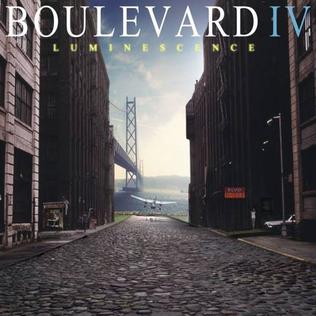| Look up luminescence or luminescent in Wiktionary, the free dictionary. |
Luminescence is emission of light by a substance not resulting from heat.

Luminescence is spontaneous emission of light by a substance not resulting from heat; or "cold light".
Luminescence may also refer to:
- Luminescence (EP), a 2009 EP by Neon Highwire
- Luminescence (album), a 2005 album by Anggun
- IV: Luminescence , a 2017 album by Boulevard
- Luminescence (journal), a scientific journal
- Luminescence! , a 1967 album by Barry Harris

Luminescence is the third international studio album by Anggun. The French-language version was released in France on 22 February 2005, while English-language version, also with the same title, was first released in Italy on 18 May 2005. The album was later repackaged in August 2006 as Luminescence: Special Edition with three brand new songs. Following her departure from Columbia Records in 2003, Anggun signed a recording contract with Heben Music. The album features production by several musicians, including Jean-Pierre Taïeb, Frédéric Jaffré and Niels Brinck. Anggun co-wrote music and lyrics of the entire album, except two tracks on the French version.

IV: Luminescence is the third studio album and fourth overall release by the Canadian hard rock band Boulevard, released on September 22, 2017. The album was recorded at Warehouse Studio in Vancouver B.C and engineered by Eric Mosher, and Zak Blackstone, assisted by Matt Harvey and Ryan Enockson. Additional overdubs were recorded at Westsonic Music, Vancouver B.C.and engineered by Dave Corman. Tracks were also recorded at Abbey Road Studios in London U.K. and engineered by Chris Bolster, assisted by John Barrett.
Luminescence: The Journal of Biological and Chemical Luminescence is a bimonthly peer-reviewed scientific journal publishing original scientific papers, short communications, technical notes, and reviews on fundamental and applied aspects of all forms of luminescence, including bioluminescence, chemiluminescence, electrochemiluminescence, sonoluminescence, triboluminescence, fluorescence, time-resolved fluorescence, and phosphorescence. The current editor-in-chief is L.J. Kricka. It was established in 1986 by John Wiley & Sons as the Journal of Bioluminescence and Chemiluminescence and obtained its current title in 1999.






